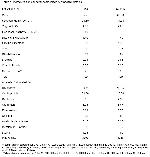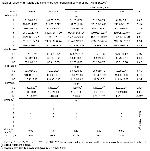Plant extracts fed to broilers gave live performance levels similar to those of the antibiotic growth promoter, results that agree with Jamroz and Kamel
15 who observed improvements of 8.1% in daily gain and 7.7% in feed conversion ratios in 17-d-old poults fed a diet supplemented with a plant extract containing capsaicin, cinnamaldehyde, and carvacrol at 300 ppm. In contrast, Botsoglou et al.
14, showed that oregano oil exerted no growth-promoting effect when administered at 50 or 100 mg/kg of feed. In the present study, a little growth promoter effect of additives was observed, but none of the treatments caused significant effects. The trial was conducted at ideal conditions of experimentation, which could affect the degree of growth promotion (Table
2). Plant extract effects may be due to the greater efficiency in the utilization of feed, resulting in enhanced growth. There is evidence to suggest that herbs, spices, and various plant extracts have appetite- and digestion-stimulating properties and antimicrobial effects
10. Clove extract contain different molecules (mainly eugenol) that have intrinsic bio-activities on animal physiology and metabolism.
The mechanisms by which these products influence the gut microflora and growth performance of poultry are not known properly. As antibiotics, plant extracts could control and limit the growth and colonization of numerous pathogenic and nonpathogenic species of bacteria in the gut. The plant extracts clearly demonstrate antibacterial properties, although the mechanistic processes are poorly understood9,10,15. Likewise, recent studies on supplementation of plant extracts to the broiler diets have supported our study with the similar results5-7,11.
We conclude that clove extract improved the digestibility of the feeds for broilers. The effect of different additives on digestibility improved the performance slightly, but this effect was statistically nonsignificant. Our results justify further research in this area to determine the optimal dietary inclusion level and the mode of action of these and other plant products to achieve optimal growth performance and digestion and this study justify the possibility use of plant extracts especially 400 ppm as an alternative natural growth promoter for poultry instead of antibiotics.
Acknowledgment
This work was supported financially by The Scientific Research Projects Council Unit of Firat University (FUBAP–1120) and was summarized from doctorate thesis.





